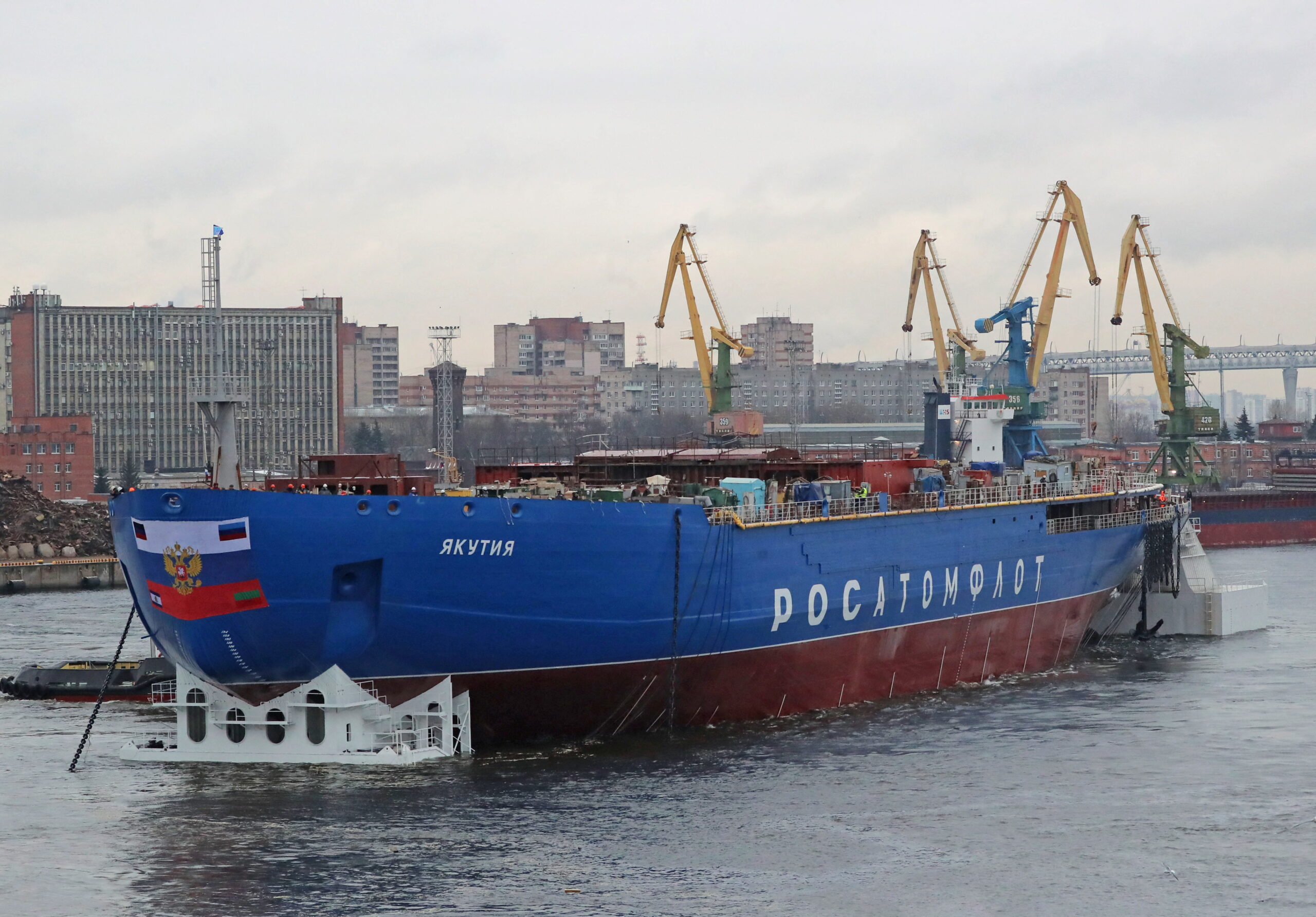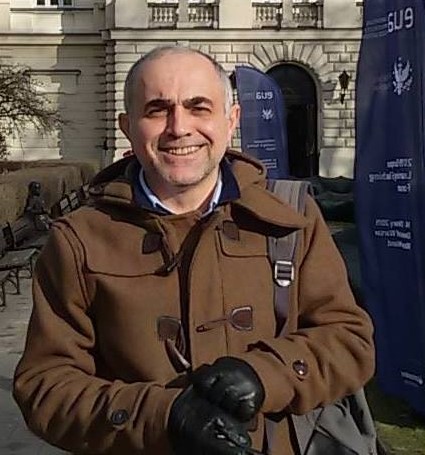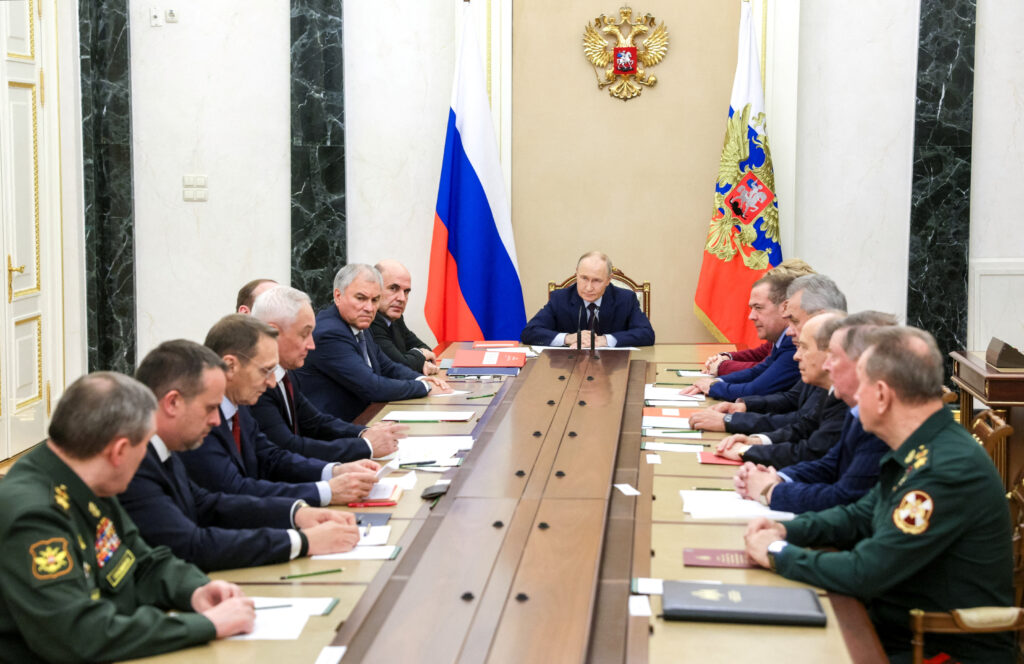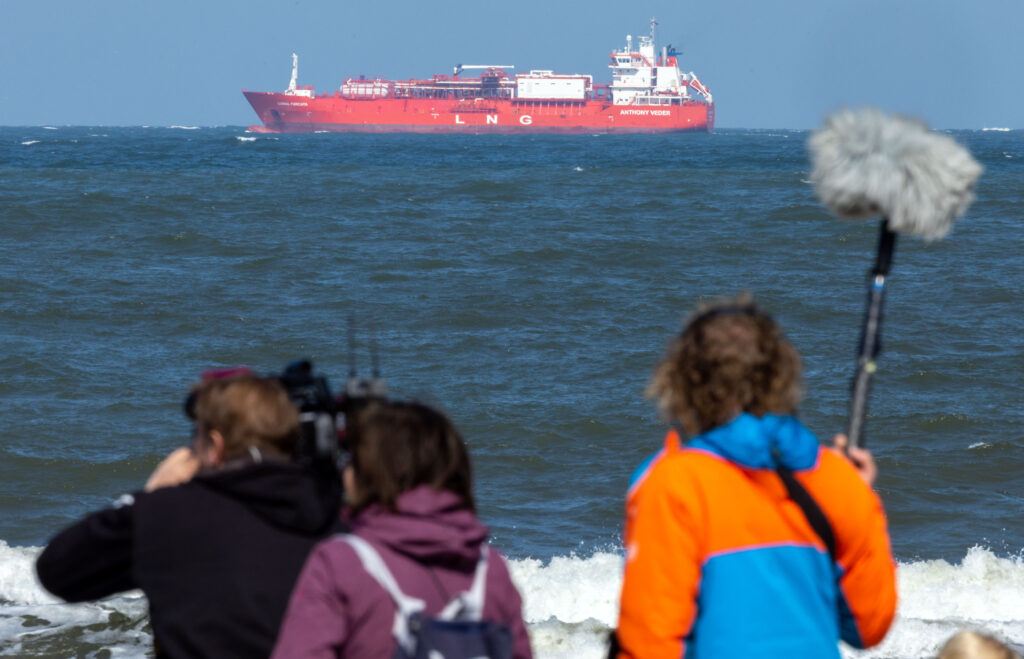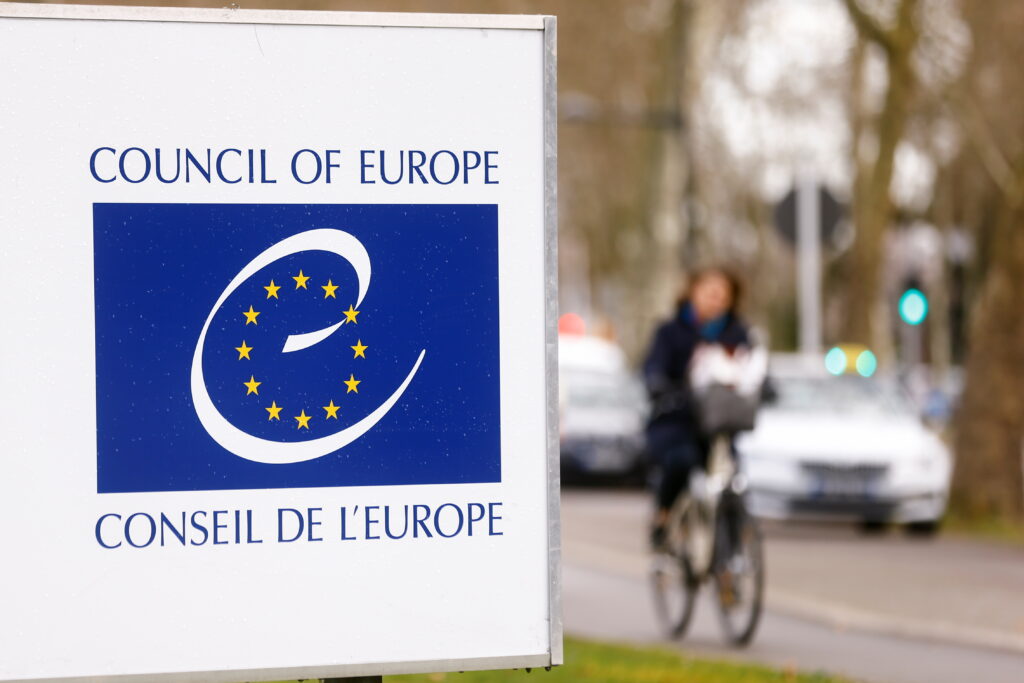Russia’s Ukraine invasion has backfired on its own economy, and there has been a clear and lasting impact on the viability of its Arctic projects. These projects’ development targets have already largely been postponed. Going forward, it is now debatable whether Moscow has what it takes to achieve its geoeconomic goals in the Arctic of increasing energy production, especially LNG, increasing cargo volume along the Northern Sea Route, and building more icebreakers. Without doubt, the fate of ongoing economic projects in the Arctic is a strategic issue for Russia. It is important not only in the context of the current invasion of Ukraine, but also for projecting Russian military power after the war.
Thus, this article explores the outlook of Russia’s Arctic economic projects. It also analyses the involvement of near-Arctic powers, such as China, in Russian economic projects in the High North.
How do the sanctions work?
In 2023, American sanctions started to target Russia’s LNG exports, including Russian and international entities involved in NOVATEK’s Arctic LNG 2 (specifically, the US put sanctions on Arctic LNG 2 itself, as well as on transshipment facilities). In addition, the threat of retaliatory sanctions prompted Chinese, Japanese, French and other companies to avoid or freeze their cooperation with the project. Moreover, the most recent round of U.S. sanctions target the planned Obsky LNG, Arctic LNG 1 and Arctic LNG 3 projects and companies building pipeline infrastructure for Murmansk LNG and Vostok Oil. They also include designations of three entities involved in either construction of natural gas-related projects or manufacturing specialized equipment for LNG transportation, as well as the identification of seven LNG vessels under construction.
A ban on transiting Russian LNG to third countries via EU ports came as part of a new round of EU sanctions adopted on June 24; this may affect up to 11.8 million tonnes of contractual obligations of NOVATEK’s Yamal LNG, which had continued delivering modules from China to Russia throughout 2023 and into 2024. The Arctic LNG 2 and Murmansk LNG are listed among 116 individuals and entities within the EU’s 14th package of economic and individual sanctions on Russia. The EU will forbid reloading services to Russian LNG in EU territory for transshipment operations to third countries. This will cover both ship-to-ship transfers and ship-to-shore transfers, as well as re-loading operations. New investments, as well as the provision of goods, technology and services for the completion of LNG projects under construction, such as Arctic LNG 2 and Murmansk LNG, will be prohibited. However, it does not affect import but only re-export to third countries via the EU. Moreover, the ban appears to not take effect until March 2025 allowing Russia to transship LNG for another full winter season.
Although European Union’s LNG imports from Russia in 2022 rose by 31% and 35% compared to 2020 and 2021 volumes, the share of Russia’s pipeline gas in EU imports dropped from over 40% in 2021 to about 8% in 2023. For pipeline gas and LNG (share: 6.1% -17.8 bcm) combined, Russia accounted for less than 15% (LNG share: 6.1% -17.8 bcm) of total EU gas imports. In 2023 Russia sent LNG costed at 8.1 billion Euro to EU countries via its primary LNG export port, Sabetta.
Western sanctions, meanwhile, target project construction, shipbuilding and the marketability of liquefied gas. Moreover, western financial institutions have also cut off participation in Russian LNG projects.
However, Russia had started to diversify its exports of energy resources and increase its exports of natural gas and crude oil to Asia even prior to 2022. Since the beginning of the invasion, it has partially succeeded in re-routing Arctic oil to China and India.
Before February 2022, Chinese state companies already held ownership stakes in several major Russian energy projects in the Arctic, including Yamal LNG and Arctic LNG 2. The same can be said for Indian companies, with Moscow actively promoting projects like the Vostok Oil and the Syradasaysky coal mines to Indian investors. Similarly, Moscow also aims to attract Chinese investments into Rosneft’s Vostok Oil project.
This year China is continuing to provide LNG modules for Arctic LNG 2. The delivery of the plant module has enabled the Russian energy company NOVATEK to complete the construction of a second production unit for Arctic LNG 2. Yet, it is not clear whether NOVATEK will be able to build the third gravity-based production unit, as initially planned. However, a vessel carrying the first two LNG modules for the third production train of Arctic LNG 2 set sail several days after the US sanctioned four heavy lift vessels for carrying LNG technology to Russia.
Russia also actively uses schemes to circumvent sanctions. In recent years, Arctic LNG 2 has continued to receive prefabricated modules from China, even though EU sanctions prohibit their export. However, not only Chinese companies have been involved in this business: EU firms have also supplied over $ 630 million worth of equipment to Arctic LNG 2 despite the sanctions imposed since Russia launched its invasion of Ukraine.
However, the sanctions have already started to affect the Russian LNG projects in the Arctic. China’s Wison New Energies, a key manufacturer of liquefaction modules for NOVATEK’s Arctic LNG 2, announced that it has decided to discontinue all of its ongoing Russian projects, and will immediately and indefinitely stop taking any new Russian business. The decision was made when, after a week ago, the U.S. for the first time sanctioned a Chinese yard, Penglai Jutal Offshore Engineering Heavy Industries. The company manufactures large-scale modules for Russia’s LNG projects.
Nevertheless, mainly thanks to NOVATEK, Russia has acquired and developed the know-how to manufacture cryogenic equipment. Russian state companies have also tried to develop substitution projects — for instance, Rostec has listed among its priorities the production of turbines for the energy sector. However, the quality of its production equipment is an open question.
The Northen Sea Route
The volume of cargo transportation along the Northern Sea Route amounted to 36.254 million tonnes in 2023, a new record. This was achieved primarily thanks to NOVATEK’s LNG projects, which make up more than half of the cargo traffic, but also thanks to Gazprom Neft, Lukoil and Norilsk Nickel, which redirected their cargos Eastwards rather than Westwards. Despite the increase, volumes lag behind those of the plan for the development of the Northern Sea Route.
The volume of cargo transportation along the Northern Sea Route by the end of 2024 should be about 40 million tonnes, which is half the amount specified in the development plan. The lion’s share will be the transportation of oil and gas from the projects that are being implemented in the Arctic zone of Russia.
Besides the effects of the sanctions and the existence of a price ceiling limit of $ 60 per barrel for seaborne oil supplies since December 2022, there are concerns about the discrepancy between the confidence of Rosneft’s claims of huge reserves of Vostok Oil and its actual geological exploration. According to the Russian government’s estimations, oil prices would need to remain between $ 70 and $ 100 per barrel to justify oil production on the Russian Arctic shelf.
The lack of icebreakers and ice-class vessels
Another challenge for the development of the Russian Arctic projects is the lack of ice-class vessels. The problems with the building of icebreakers and ice-class vessels started already in 2022 when Finnish companies left Russia. Challenges with access to technologies are increasing and cooperation with Finnish and South Korean companies has been cut off or frozen. NOVATEK cannot receive six LNG tankers this year from the Korean shipyard Hanwha Ocean. The tankers were destined to export gas from the Arctic LNG-2 project. Three gas carriers are now unavailable because their customers, Sovcomflot structures, fell under direct US sanctions on February 23. Three more tankers are being built by order of MOL and are not subject to sanctions, but their delivery is delayed. As a result, NOVATEK does not yet have a fleet for shipments from Arctic LNG-2, despite the launch of the first train of the project.
The Russian government prolonged the building or cut funding for the building of some icebreakers to focus on project 22220. Rossatom plans to extend the service of Soviet nuclear-powered icebreakers, Taimyr and Vaygach, in the Western part and deploy new icebreakers (project 22220) in the eastern Arctic. No one has ever operated nuclear icebreakers beyond 36 years and it means potential problems for the environment.
Many Russian companies want to cooperate with Turkish and Chinese companies due to high prices and failure to meet construction deadlines at the local shipyards. In Russia, quality suffers due to inconsistency in the interaction between designers and builders. Moreover, Russia’s intentions to replace Finnish and South Korean shipbuilding companies with Chinese cooperation to meet the needs of the energy companies after sanctions are problematic, again, because of secondary sanctions.
What can be expected?
The development of economic projects in the Arctic is a strategic issue for Russia and is not only important in terms of continuing the current invasion of Ukraine, but also in terms of restoring its military power once the current war ends.
In any possible scenario, all Russian Arctic energy projects will face similar technology, logistics and market problems. Therefore, delays and the slow tempo of developments of Russia’s Arctic projects are unavoidable. Currently, Russia has neither capacity nor time to build new icebreakers. Extending the service of Soviet nuclear-powered icebreakers mean potential problems for the environment, which Moscow may also use as a form of blackmail. Although Moscow tries to involve non-Western powers in the transport project, it wants to keep navigation through the NSR under strict Russian control.
Despite all of those problems, Russia’s energy projects will likely benefit from rising global demand for LNG by the 2040s and its role as a transition fuel in the coming years.
Major factors in how Russian economic projects do or do not develop in the coming years will shape geopolitical processes in the region and even could impact the international system, transforming Russia’s foreign policy, the prices in the energy market, and posing new environmental and climate risks.
